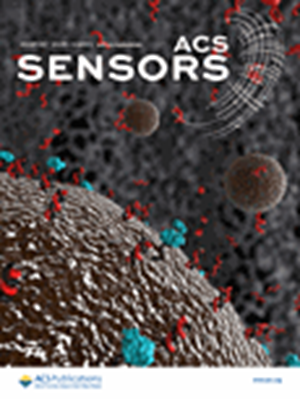工程钙钛矿氢氧化物作为冷适应氧化酶模拟物构建坚固的低温自适应生物传感器
IF 9.1
1区 化学
Q1 CHEMISTRY, ANALYTICAL
引用次数: 0
摘要
传统的生物检测方法依赖于酶催化或核酸扩增等信号扩增策略。然而,在低温环境下,它们的效率会降低,从而影响它们的检测灵敏度。为了打破酶在低温下催化活性的丧失,对冷适应纳米酶的研究引起了人们的广泛关注。到目前为止,只有少数纳米酶被报道具有耐寒催化性能。本文通过对氢氧化钙钛矿的工程改造,构建了一种新型的冷适应纳米酶。纳米酶的催化活性不仅提高了2个数量级,而且在0℃条件下仍保持了优异的催化性能。这种增强的活性可能归因于锰含量、空位氧和四价锰的增加。然后,利用低温自适应纳米酶构建了鲁棒性低温自适应生物传感器。值得注意的是,冷适应探针对硫化物离子、抗坏血酸、碱性磷酸酶和细胞谷胱甘肽的检测受温度降低的影响较小,且探针在0℃时对ALP的检测灵敏度优于商用试剂盒。最后,进一步利用冷适应纳米酶构建纸基H2S气相比色探针。本研究开发了一种新型的冷适应纳米酶,拓宽了纳米酶的应用前景。本文章由计算机程序翻译,如有差异,请以英文原文为准。

Engineering Perovskite Hydroxide as a Cold-Adapted Oxidase Mimic for Construction of the Robust Low-Temperature Adaptive Biosensors
Traditional biological detection methods rely on signal amplification strategies such as enzymatic catalysis or nucleic acid amplification. However, their efficiency decreases in low-temperature environments, compromising their detection sensitivity. To break the loss of enzyme catalytic activity at low temperatures, research on cold-adaptive nanozymes has attracted much attention. Till now, only a few nanozymes have been reported to have cold-resistant catalytic properties. Here, a new type of cold-adapted nanozyme was constructed by engineering a perovskite hydroxide. The nanozyme not only boosted the oxidase-like catalytic activity by 2 orders of magnitude but also retained excellent catalytic performance at 0 °C. This enhanced activity may be attributed to the increase in manganese content, vacancy oxygen, and tetravalent manganese. Then, a robust low-temperature adaptive biosensor was established with a cold adaptive nanozyme. Notably, the detection of sulfide ion, ascorbic acid, alkaline phosphatase, and cellular glutathione by the cold-adapted probe was less affected by the temperature reduction, and the detection sensitivity of the probe for ALP at 0 °C is better than that of a commercial kit. Finally, the cold-adapted nanozyme was further used to construct a paper-based H2S gas colorimetric probe. This study develops a new cold adaptive nanozyme and broadens the application scenarios of the nanozymes.
求助全文
通过发布文献求助,成功后即可免费获取论文全文。
去求助
来源期刊

ACS Sensors
Chemical Engineering-Bioengineering
CiteScore
14.50
自引率
3.40%
发文量
372
期刊介绍:
ACS Sensors is a peer-reviewed research journal that focuses on the dissemination of new and original knowledge in the field of sensor science, particularly those that selectively sense chemical or biological species or processes. The journal covers a broad range of topics, including but not limited to biosensors, chemical sensors, gas sensors, intracellular sensors, single molecule sensors, cell chips, and microfluidic devices. It aims to publish articles that address conceptual advances in sensing technology applicable to various types of analytes or application papers that report on the use of existing sensing concepts in new ways or for new analytes.
 求助内容:
求助内容: 应助结果提醒方式:
应助结果提醒方式:


